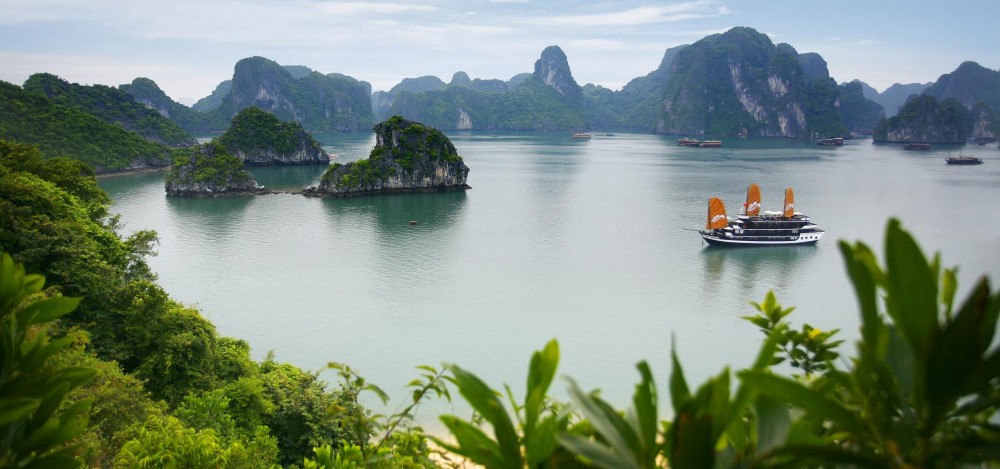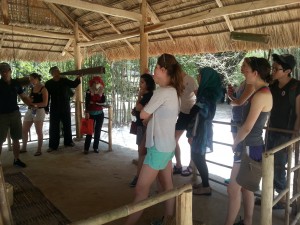Scott Laderman’s Tours of Vietnam: War, Travel Guides, and Memory prompted a class discussion about the responsibility of travel guides to put forward a certain historical narrative. The brief, one-sided descriptions of the Vietnam War in the Lonely Planet guide seemed problematic, despite our consensus that few people rely on travel guides for more than a list of top sites and restaurant recommendations. The consequence or lack thereof of tourists who do not take it upon themselves to be historically informed could be further analyzed and debated, but I instead want to expand on this more general idea of one’s responsibilities as a tourist.
Although there was the occasional Vietnamese school group at a museum or other historical site, for the most part, the places we were seeing and the things we were doing were almost exclusively for tourists. I was surprised at how nearly every restaurant had an English translation of each menu item, often accompanied by pictures; it seemed as if every shop, restaurant, museum, and attraction was catered towards visitors, not locals. The scale of the tourist industry in both Saigon and Hanoi resulted in an almost uncomfortable experience where I was acutely aware of my imposition on my surroundings. In a foreign country halfway across the world, I should have had a much more difficult time getting around and communicating with others given I arrived not knowing a single word of Vietnamese. Instead, restaurants, storekeepers, and many others positioned themselves to be as approachable and accessible as possible so that I, as a tourist, felt comfortable. The pace of daily life, the foods, the smells, the customs were all still obviously very new and different, but I had trouble moving past the overwhelming hospitality we were shown as tourists. It’s unrealistic to expect every tourist to learn the language and read extensively about the culture and history of whichever country they are about to visit, but the level of accommodation I witnessed in Vietnam towards foreigners must have been in response to some sort of demand for a more comfortable experience. I found myself getting frustrated at street food stands and restaurants when the waiter could not understand what I was saying—an experience that I think Americans are particularly prone to having since we are used to everyone speaking English wherever we go—and would imagine these sorts of experiences with irritated tourists prompted a culture of providing Americanized accommodations and experiences. However, I think it is the tourist’s responsibility to expect these types of difficulties and refrain from expressing their frustrations towards the local population.
I was not aware of one of the most shocking aspects of Vietnamese catering towards foreigners until the last day of the trip when I asked Professor Chapman about the lack of homeless people and beggars on the street. The sad reality of nearly every big city I’ve been to is that each has had a sizable population of homeless people. It stood out to me that homelessness didn’t appear to have a visible presence in either Saigon or Hanoi. I learned that this was largely a result of the government’s beautification campaigns, during which they load up homeless people on to a bus and drop them off in the countryside. So in an effort to make the city more appealing to tourists, the government is actually displacing people rather than addressing their problems. While there are a number of contributing factors to this policy, the fact that the presence of foreign tourists in the country is one of them makes for an uncomfortable realization. I don’t have a good idea for how a tourist should address this more troubling aspect of the tourist industry in Vietnam and elsewhere, but I think the first step is to be aware of and do away with the expectation that traveling should be an eye-opening, yet comfortable experience. Some aspects of being in a foreign country will inevitably be challenging, which is a part of traveling that has become all too easy to forget.

